Evolution of the Mysore Lancers
The Mysore Lancers evolved from the Wodeyar dynasty’s early military traditions into a formalized cavalry regiment in the late 19th century, reaching their zenith under Krishnaraja Wodeyar IV during World War I. Their development reflects Mysore’s adaptation to colonial military demands while preserving a legacy of valor, most notably at Haifa in 1918.
Formation and Formalization
The Mysore Lancers as a distinct regiment emerged in the 19th century, after the British restored the Wodeyar dynasty to power in 1799 following the defeat of Tipu Sultan. During the reign of Krishnaraja Wodeyar III (reigned 1799–1868), the kingdom was under significant British influence, and its military was restructured to align with colonial interests. The British encouraged princely states to maintain contingents like the Imperial Service Troops, which included cavalry units. The Mysore Lancers were formally established as part of this initiative, though their exact founding date is often traced to the late 19th century.
The regiment was officially created on April 1, 1892, during the reign of Chamarajendra Wodeyar X (reigned 1881–1894), under the oversight of his successor, Krishnaraja Wodeyar IV, who ascended the throne as a minor in 1894 (with his mother as regent until 1902). This cavalry unit was designed to match the discipline, training, and equipment of British native cavalry regiments, reflecting the modernizing efforts of the Wodeyar state under British suzerainty.
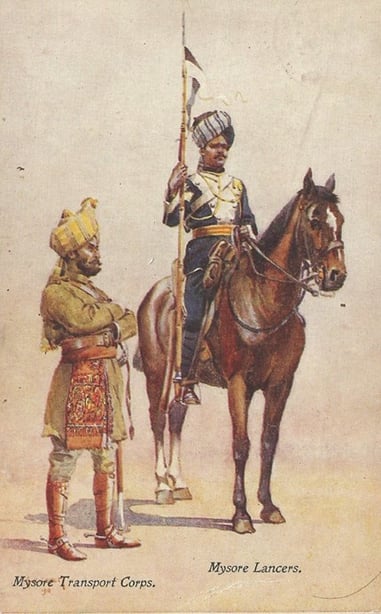

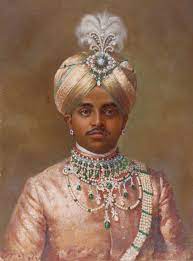

The Mysore Lancers reached their historical prominence during the reign of Krishnaraja Wodeyar IV, often hailed as the architect of modern Mysore. His rule saw significant advancements in administration, infrastructure, and military organization, including the enhancement of the Mysore Lancers. By the early 20th century, the regiment consisted of approximately 29 officers, 444 non-commissioned men, 526 horses, and over 40 mules, showcasing a well-equipped and disciplined force.
The Lancers’ most celebrated contribution came during World War I (1914–1918). Krishnaraja Wodeyar IV, responding to a request from Lord Chelmsford, the Viceroy of India, committed the Mysore Lancers to the war effort, alongside substantial financial support. The regiment fought in the Middle East, most notably in the Battle of Haifa on September 23, 1918, alongside the Jodhpur and Hyderabad Lancers. This battle, part of the broader Sinai and Palestine Campaign, saw the Mysore Lancers play a decisive role in capturing the city of Haifa from Ottoman and German forces. The victory is remembered as one of the last significant cavalry charges in military history, earning the Lancers enduring recognition. September 23 is still commemorated as "Haifa Day" by the Indian Army.
Krishnaraja Wodeyar IV’s support for the Lancers was part of his broader vision of aligning Mysore with global developments while maintaining its cultural and military heritage. His patronage ensured the regiment was well-trained and equipped, reflecting the state’s commitment to both tradition (cavalry warfare) and modernity (integration into a global conflict).
Post-World War I and Decline
After World War I, the role of cavalry units like the Mysore Lancers diminished with the advent of mechanized warfare. Under Krishnaraja Wodeyar IV’s successor, Jayachamarajendra Wodeyar (reigned 1940–1950), the regiment’s prominence waned as the princely state’s military functions were gradually absorbed into the Indian Union following independence in 1947. The Mysore Lancers ceased to exist as an active unit, but their legacy endures through commemorations and historical recognition.
Peak Evolution Under
Krishnaraja Wodeyar IV (1902–1940)
Training ,Equipment and Warfare Tactics
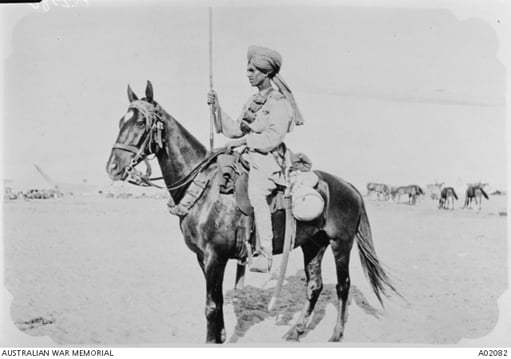

Training
British-style Training: The Mysore Lancers were trained according to British military doctrines, with a focus on discipline, formation drills, and standardized tactics.
Cavalry Skills: They retained their traditional cavalry skills, such as mounted combat, swordsmanship, and lance usage, but also incorporated firearm training (carbines and pistols).
Adaptation to Modern Warfare: Their training was gradually adapted to fit the evolving needs of modern warfare, which included a greater focus on reconnaissance, patrolling, and scouting.
Integration with British Units: The Mysore Lancers worked alongside British cavalry and infantry units, where they received additional training in combined arms tactics.
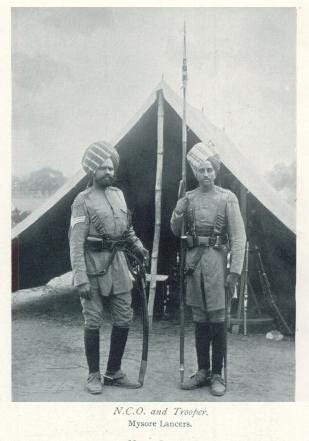

Equipment
Lances and Swords: The Lancers continued to use lances, which were a key part of their original identity. They also carried swords for close combat.
Firearms: Over time, they were equipped with carbines or pistols, providing them with both ranged and melee capabilities.
Horse Gear: Like other cavalry units, they used standard horse tack for mobility and control during combat.
Uniforms: The Mysore Lancers' uniforms began to reflect British military styles, with elements of the traditional Mysorean attire adapted to match British army regulations.
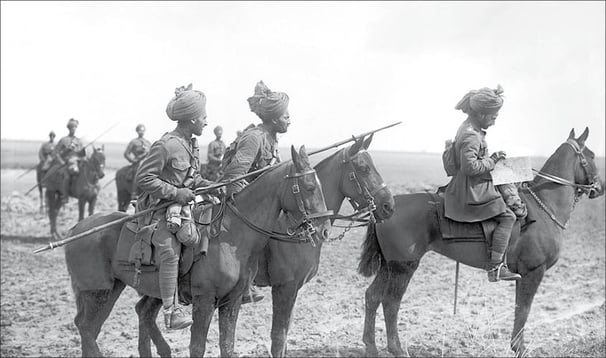

Warfare Tactics
British Cavalry Doctrine: Under British influence, the Mysore Lancers followed European-style tactics, including linear formations, cavalry charges, and flanking maneuvers.
Reconnaissance and Skirmishing: They were often used for reconnaissance, scouting, and skirmishing, leveraging their speed and mobility to gather intelligence and harass enemy units.
Counter-Guerrilla Operations: The Lancers were also employed in counter-insurgency operations and police actions, particularly during the 1857 Rebellion (First War of Indian Independence), where they suppressed uprisings.
Patrolling and Pursuit: Their role evolved to include patrolling and pursuing fleeing enemies, capitalizing on their speed for quick response to threats and ambushes.
Get in touch to contribute stories on Mysore lancers
Connect with us ...
© 2025. All rights reserved.
